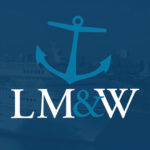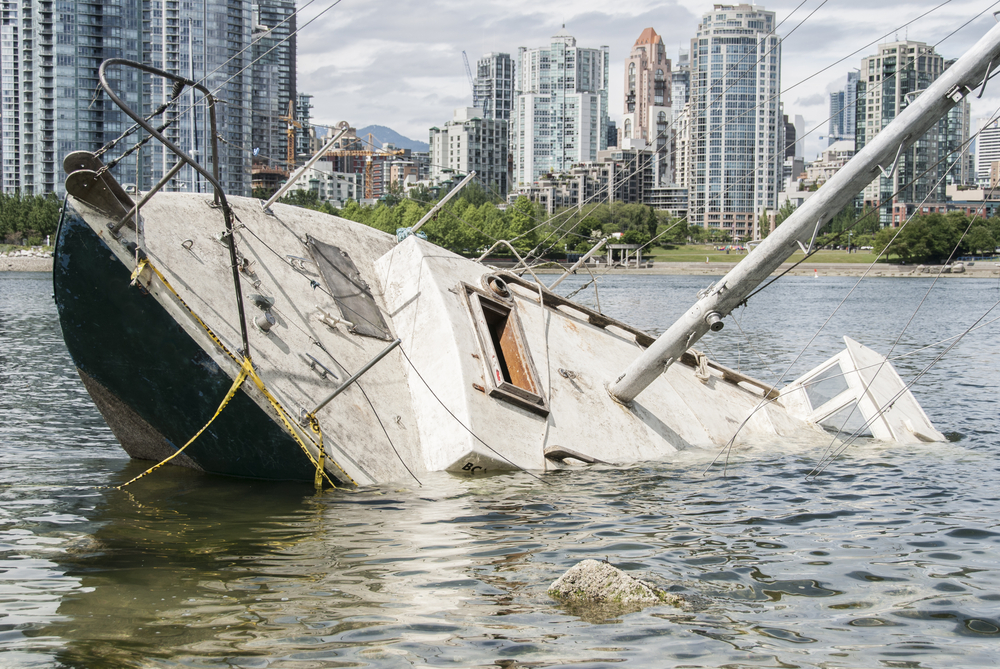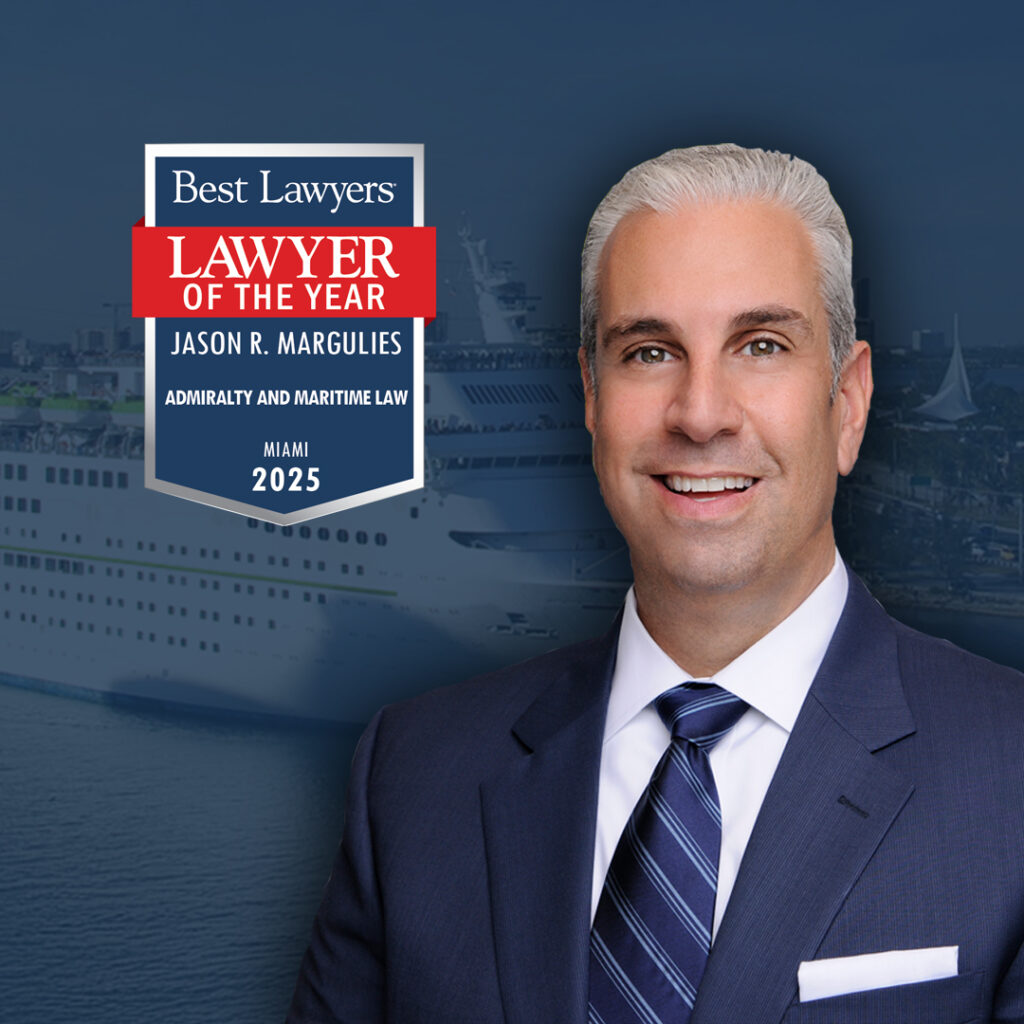
Crashes, Groundings and Sinkings
Accidents of this caliber are among the worst possible. A grounding, crash and even a partial capsizing can lead to fatal injuries, which unfortunately, is the result in the following major cruise accidents. The first, of course, is the sinking of the so called “unsinkable ship”, the RMS Titanic. Most of us know the story about the Titanic, but for those that don’t, the Titanic was a 52,310-ton ship that struck an iceberg in the North Atlantic while on its maiden voyage in 1912. As a result, the ship nearly snapped in two, sinking into the chilling waters below and killing over 1,500 of its 2,200 passengers and crew.
The Titanic will always go down in history as the worst cruise ship disaster of all time, mostly because the accident could have been entirely avoided. Had the captain refused to push the ship to go faster and had the vessel been equipped with sufficient lifeboats, perhaps the outcome would have been entirely different. These days, lifeboat capacity isn’t a problem, nor is a ship’s speed or power. But despite this tragic maritime accident happening over 100 years ago, similar mechanical disasters have befallen the industry and to this day, most of the accidents that occur on the high seas are caused by negligent conduct. Negligence associated with failing to maintain a ship’s equipment, negligence associated with failing to properly train crew members in the event of an emergency, and negligence in equipping a ship with sufficient safety features.
Nearly exactly 100 years after the titanic, the Costa Concordia capsizing accident was a prime example of how negligence contributed to the demise of a ship and its passengers and crew. The Concordia crashed into a large rock off the coast of Giglio, Italy in 2012 and partially sank. Of the 4,200 people onboard the vessel, 32 died and 64 were injured. The ship’s captain, Francesco Schettino, is still on trial for manslaughter and abandoning ship for his role in the incident. It was allegedly Schettino’s decision to alter the course of the vessel to perform a sort of close up drive by of the nearby town which resulted in the disaster, and there have been claims the giant rock was not visible in his nautical maps. Aside from his actions, survivors recounted a nightmarish experience after the crash in which crew members were frantically running around, unable to communicate with one another and making it nearly impossible for an evacuation to run smoothly. All of these factors – along with the fact that Schettino abandoned ship before everyone was safely ashore – played significant roles in contributing to the terrible outcome of this accident.
Sadly, just like with the Titanic, the lessons to be learned from the Concordia accident have yet to be fully learned. Accidents are STILL happening and innocent people are getting hurt.
Let’s explore some of the other types of accidents that have befallen the industry and what the cruise lines have done to help victims.
Cruise Ship Fires
One of this year’s cruise ship accidents has gone down in history as one of the most notable disasters in maritime history. Though no one was killed in the February fire aboard the Carnival Triumph, over 3,500 people were left stranded in the middle of the Gulf of Mexico with barely anything to eat and forced to endure absolutely dire sanitary conditions.
Firstly, it appears the fire could have been entirely avoided had crew members paid attention to the ship’s equipment and found the fuel leak in time, but the fact that the entire vessel lost power was probably the biggest sign that the company was negligent in equipping the vessel with emergency backup generators.
Even more astounding was the fact that Carnival barely wanted to compensate victims for their turmoil. The company proposed a refund, future cruise credit and $500, but this compensation pales in comparison to the suffering the victims endured. Suffering that could have ended much faster had Carnival tugged the disabled Triumph to Progreso, Mexico, a port which was much closer than Mobile, Alabama, where the vessel finally ended up.
Illness
Norovirus is the most common illness suffered by cruise ship passengers and crew members alike. Though we hear about cases involving the infamous stomach bug quite frequently, perhaps one of the worst cases happened back in 2010 aboard the Celebrity Mercury. Out of 2,600 passengers and crew onboard the ship, over 400 became sick with Norovirus, causing widespread gastrointestinal ills for those who were stricken with the highly contagious bug.
While it’s impossible to completely prevent a Norovirus outbreak, at least from the cruise line’s standpoint, it’s important to maintain the highest sanitary standards possible. Guest rooms should be thoroughly cleaned, kitchen equipment should be sanitized and anytime a crew member is ill, they should take a short leave of absence so they don’t pass their sickness to other crew members or to passengers.
Of course what should happen and what actually does are two different things. Many crew members have been caught working while sick, failing to wash their hands, and overall, failing to keep areas on the ship sanitary. Luckily the CDC conducts yearly random inspections and grades cruise ships on their sanitation, but unfortunately, not all cruise lines get caught and even those that do had the chance to get away with their negligent actions before they were revealed.
Crime
Crime on the high seas is a very complex subject because so many types of crimes can – and have – occurred. Sexual assault is the most common type of crime experienced on cruise ships, but other incidents such as robbery, physical assault and murder have all occurred both onboard a vessel and ashore. In 2005, one of the most horrible crimes occurred, and while no one was injured, the experience was extremely traumatizing for victims.
The Seabourn Spirits was about 100 miles off the coast of Somalia when pirates attacked the ship. Firing at the vessel with machine guns and grenades, the captain was barely able to change course and escape the perilous situation, but it was certainly a horrific situation for those onboard. A cruise ship pirate attack isn’t very common, but this particular incident will go down in history as one of the most surprising.
Though some of these incidents were due to negligence on a cruise line’s part, others, like the pirate attack, completely caught the ship off guard. But no matter what the particular situation, it’s important for anyone who has been the victim of a cruise accident, illness or crime to speak with a maritime attorney regarding the situation to see if a viable personal injury case can be established. Cruise lines must maintain the highest safety standards for everyone onboard, and what that safety is violated, victims have a right to seek legal help.
Published on December 10, 2013
Categories: Cruise Ship Accidents, Cruise Ship Injuries
Get Free
Consultation










